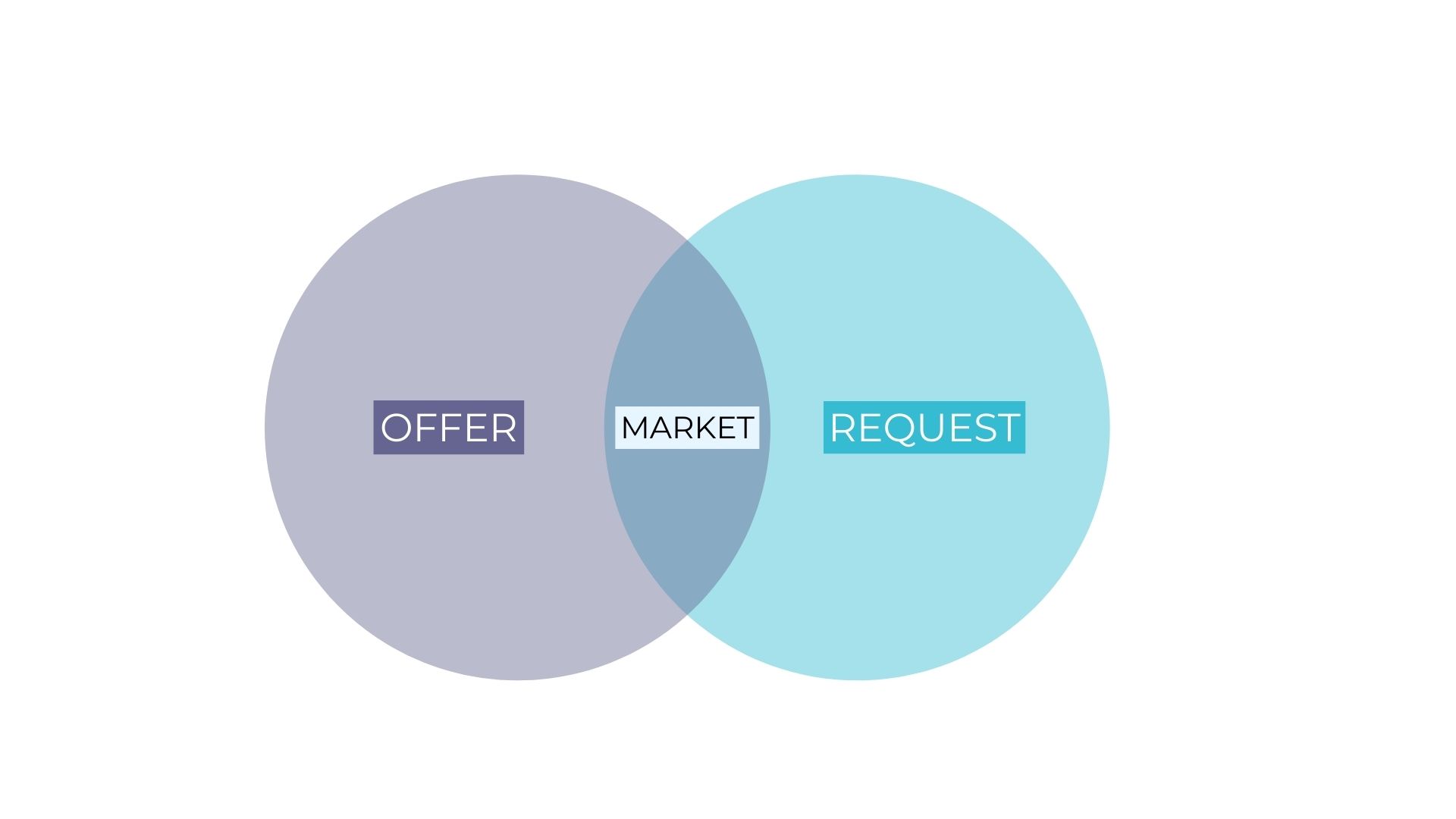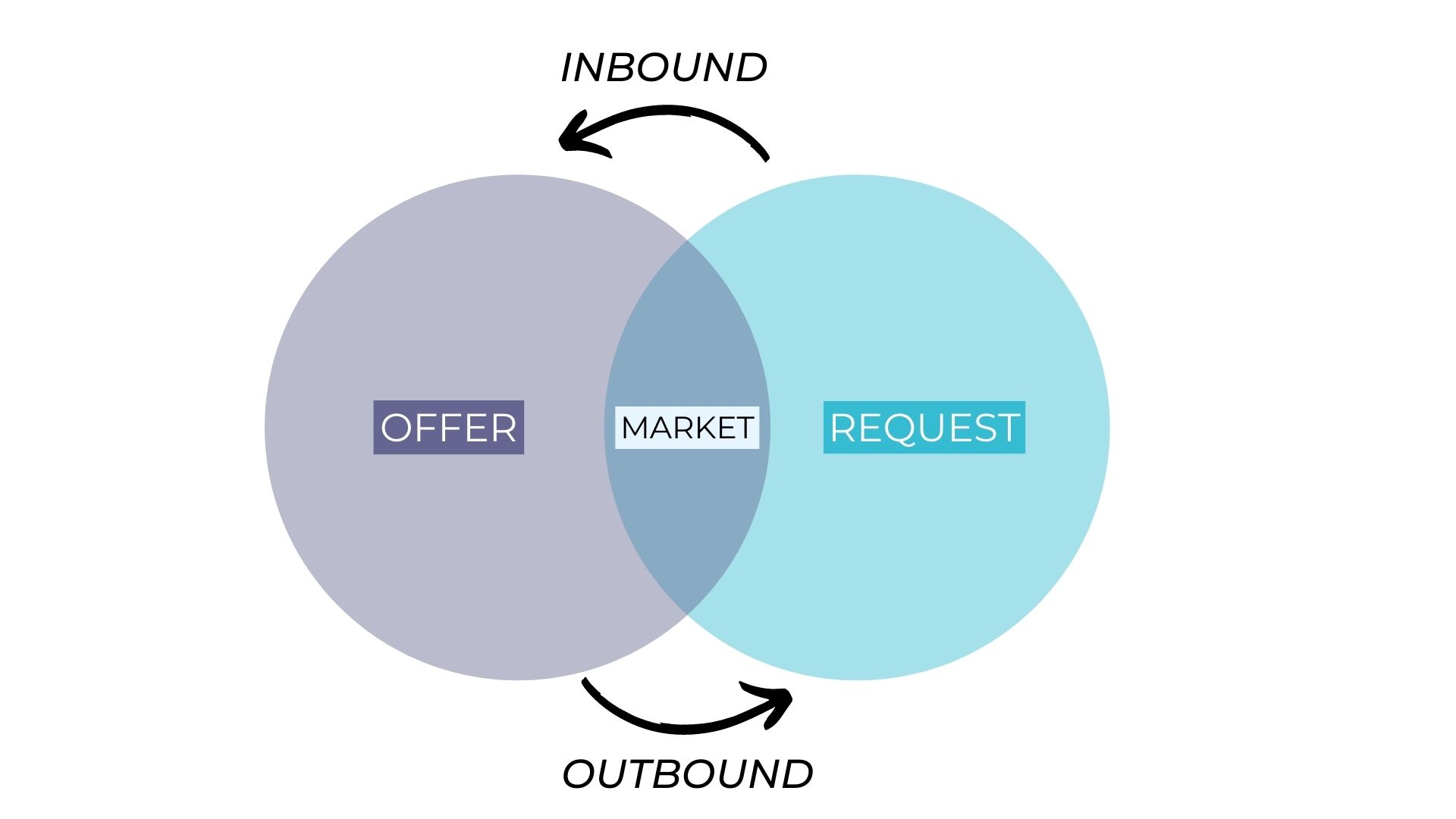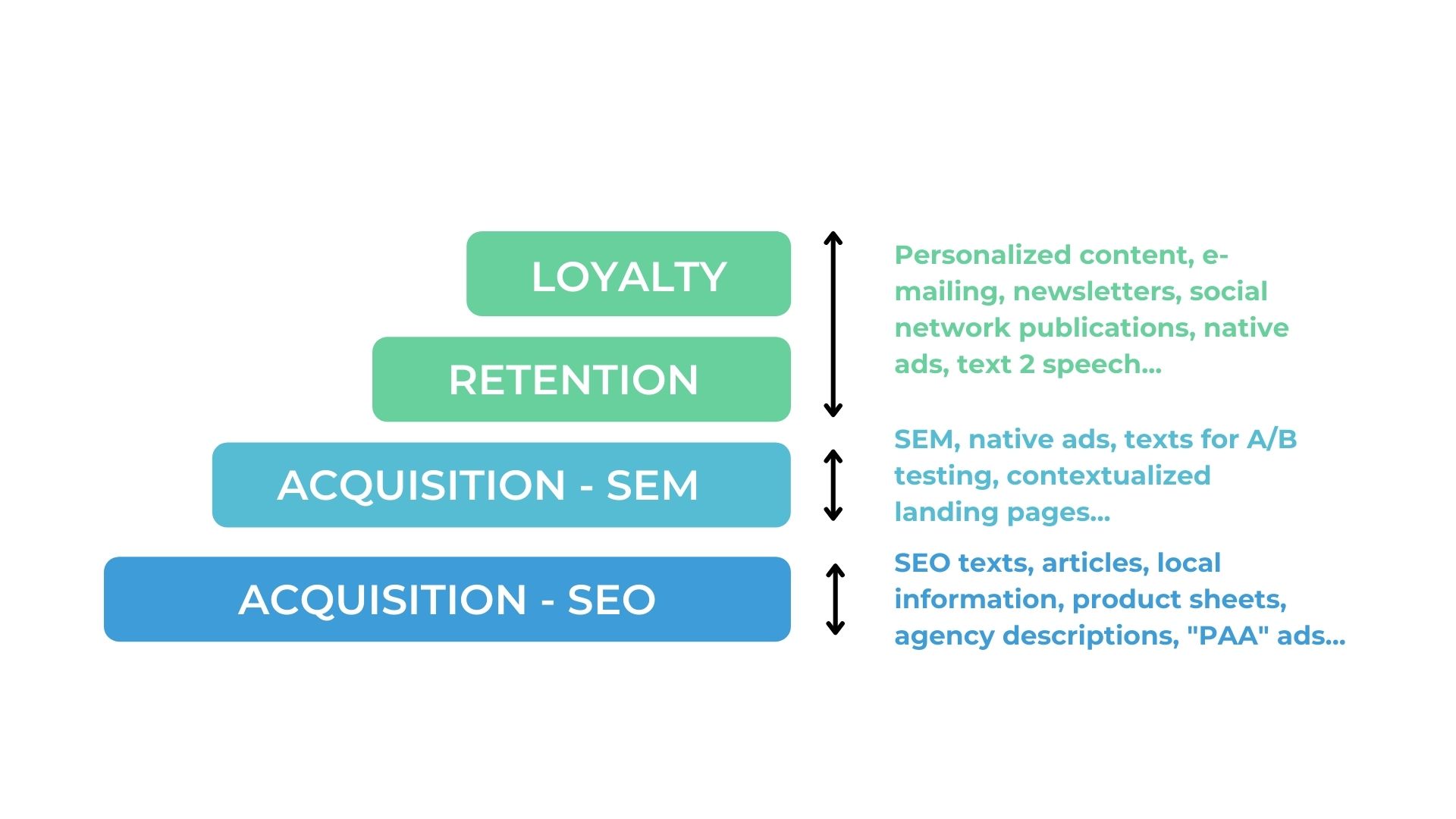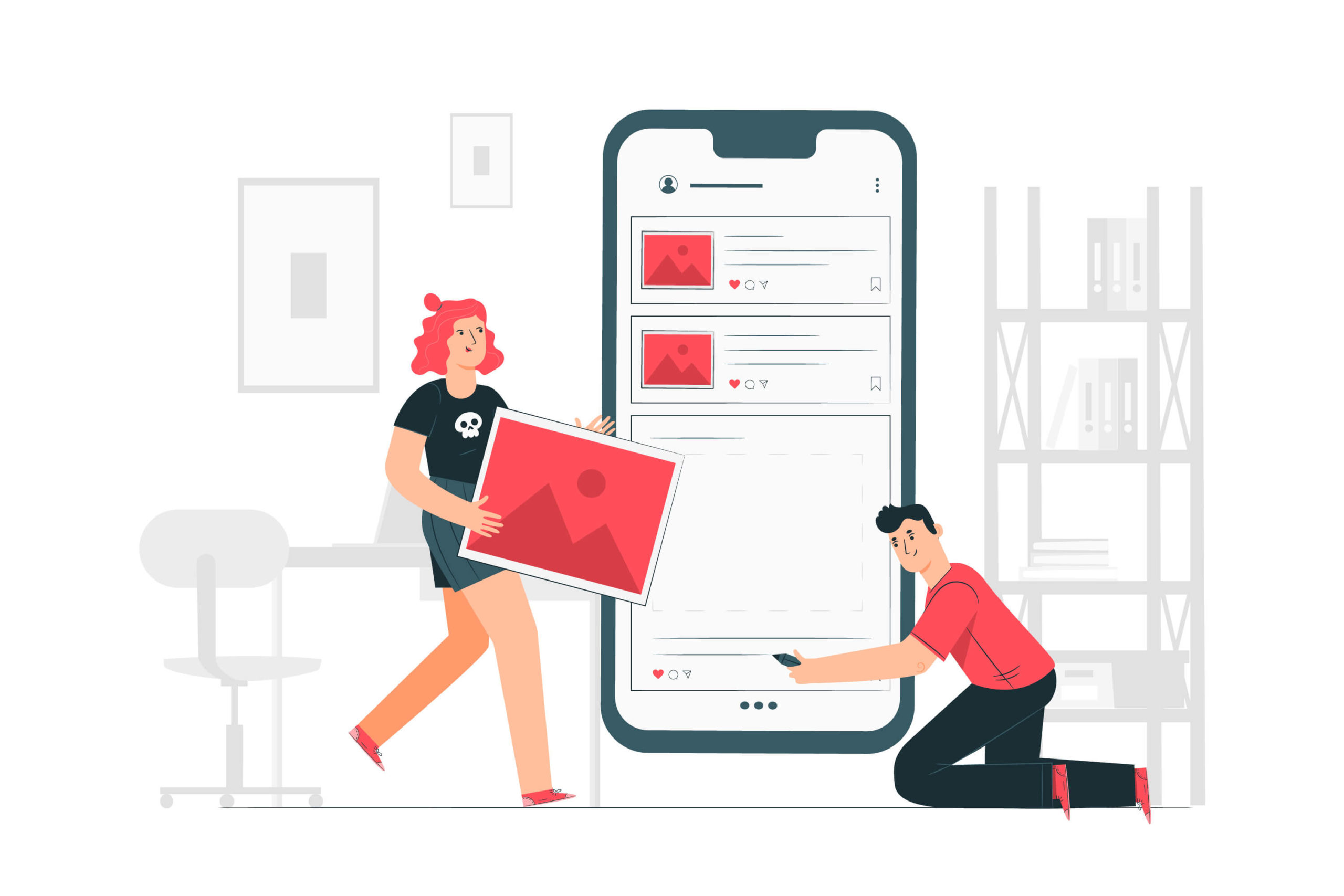In B2B as in B2C, it is essential today to do content marketing. Artificial intelligence makes it possible to implement cutting-edge and effective strategies to stand out and generate business opportunities. Let’s find out how…
What is content marketing?
1. Let’s go back to the essentials: the origins of marketing
1.1 Clarity above all
“What we conceive well is clearly stated” said Boileau, and, although the language evolves, stormed by these increasingly vehement anglicisms, the saying remains relevant, including in a marketing context! It is time to simplify and to lift the veil on all these confusions which hover around marketing. “In the beginning” there was supply and demand, with sellers on one side and buyers on the other.
1.2 Marketing > Market
So far so good, no rocket science. And bam! What do we find at the intersection of these two sets, what do we find? The market of course: place of exchange for the seller’s goods, intended for the buyer. It’s as old as ancient trade.

2. From the market of parsnips to marketing
2.1 Definition and role of marketing
And yes, it is no coincidence, therefore that marketing very simply is defined as “the means used to facilitate the exchange of goods and services between sellers and buyers. Why? To generate turnover.” The role of marketing, is therefore, in essence, that of a mediator, of a communicating vessel. It’s ultimate goal to profit or even “to make money” for the boldest and most ruthless (sorry if we hurt any consciences).
2.2 Goal of marketing
For making a maximum of profit, attracting clients, a simple table with parsnips doesn’t suffice, you have to put decoration, an ambiance, put on music, think of recipes…All of this is marketing! In short, marketing is “stirring up desire” around a product or a service by demonstrating that it responds to a “market tension”, a problem clearly identified by the target audience.
2. From marketing to online marketing
This being defined, marketing then designs ways to reach very distinct target audiences with different specificities within the set of offers. Therefore, it takes into account the communication channel or medium. If the target market is very connected to the internet, using computers or smartphones for example and surfing the web…we talk about online marketing. In short if the target audience is on the Internet we talk about online marketing, if they are in a store we talk about marketing. Everything makes sense now!
Marketing

Online marketing

3. Online marketing to “content marketing”
3.1 Inbound vs Outbound

Online marketing has several levers to attract Internet users, techniques to attract them to a site, like a magnet: which is Inbound Marketing, and for the more pushy strategies that aim to activate it we are talking about Outbound Marketing (eg. so called “push” campaigns, e-mailing, newsletters, sms etc.) Whether you want to touch or challenge your audience in one way or another, you need a message. This message is called THE CONTENTS.
3.2 What is the link between content and content marketing?

Concretely, content corresponds to texts, images, videos, infographics, posts…adapted for the identified target audience. The target audience is called “a persona” and is associated with pre-determined subjects of interest. When the target audience is on the internet, we talk therefore of “content” marketing. This is content aimed at attracting a target first, and then “working” it on different layers of the conversion “funnel”. The whole production strategy of this content is called “content strategy” and the deployment of all the actions associated with this content to generate sales is called “content marketing”.
Content marketing and the visibility of the web
1. Why do we need a “content marketing” strategy?
As we have explained earlier, the content is one of your privileged points of contact with your target audience, your persona. To stimulate their interest, you have to entertain them, talk to them, provide them with the information they are looking for to build a relationship with them. This will allow you to be chosen, rather than another competitor…The Internet user still has to find you. The first issue of content is certainly visibility!
2. Why isn’t everyone “visible on Google” in the same way?
Let’s not forget that if Google is a browser, it is also a network. This means that it allocates space to intermediaries (and some against payment, see Google Adwords), a bit like a landlord for a shop, but here everything is on the Internet. Using the same principle, a landlord determines who will take a sales space or the lease, according to the solidity of the file. Let’s compare this folder to the content of your site.

3. Where do the Google algorithms come from?
Google starts from the observation that there are too many players that exist on the Internet and interact with Internet users. If everyone could appear at the top of the page, the Internet user would feel cheated, they wouldn’t know what page could best answer their question and Google would degrade the user experience. For choosing who comes in first place, Google decides on a certain number of criteria, checked by the algorithms. The selection criteria in natural referencing, SEO, apply to content. Which is similar to the flesh of your website, in short, this is the content of the file.
4. The 3 pillars of web content at the heart of content marketing
The 3 pillars of content are the quantity, quality and timeliness. What is to be understood by this?
4.1 Content marketing and quantity of content
To be efficient in SEO terms, content has to be published in a quantity sufficient enough to prove that a brand demonstrates legitimacy on the subject. The robots will list many occurrences of words, semantic cocoons, lexicons belonging to the same family. To establish legitimacy on a subject, we must publish en masse about this subject.
4.2 Content marketing and timeliness of content
The more the content is recent, the more it will be judged as relevant by Google. The browser thinks the same way we do. It will therefore promote content that is often renewed, because it will seem more reliable, or to put it simply, “up to date.”
4.3 Content marketing and quality of content
Finally, the content has to be of high quality. In other words, the content has to be legible, well organised and respond to the questions of the Internet users, the subject has to bring value to the experience of the Internet user in their request on Google.
How does AI boost your content marketing?
1. What are the particularities of web content?
The question deserves to be asked because, indeed, we don’t write on the Internet as we would in a newspaperl! For good reason, all content published on a site is scrutinized by browsers, in particular robots which will dissect all content in a very methodical and rational way. To be effective web content must obey well-defined criteria.
2. How to write for the Internet?
Write principally in the active voice, sentences of 20 words maximum, a lot of connectors, a lot of structuring of the subject by means of tags, inserting images, links, not making paragraphs too long…and especially not writing too much in metaphor or image…Precisely all these criteria are very rational and thus configurable on an artificial intelligence technology.
3. The 3 pillars of content boosted simultaneously by LabSense
By feeding directly on data (excel spreadsheets, csv, PIM files etc.), LabSense digests this data, structures it, and generates texts optimized for SEO. The profusion of data will allow it, initially, to generate in mass to meet the first pillar. The quality will then be met because LabSense relies on the alliance of linguists, who are very human, and technology to guarantee literary quality. In addition, it offers to facilitate web integration. It formats the text with metadata, links, markup and adapts the delivery format. Finally, the more content there is in mass and generated in advance, the more we can anticipate publications. Thus, LabSense makes it possible to positively impact the frequency of the publication of content. The very high reactivity of the solution makes it possible to vary the texts, which are updated quickly and which invite the robots to analyze them again for a rise in the Google ranking.
3. Recycle and renew existing content easily
Content created through robowriting is easily renewable. Once the process is started, new content can be obtained without re-configuration delay. Intelligent data analysis allows the machine to update content and enrich it by creating new texts. Furthermore, the AI also makes it possible to change the formats. In this sense, the LanSense AI can dynamically generate weather in video format as it does by text.
AI for a strategy complete and efficient
1. More power for highly personalized content
The intelligent analysis of data makes it possible to differentiate the contents according to their recipients. Supported by customer data, it declines and refines the content in view of precise targeting. AI thus makes it possible to plan an organized content marketing strategy so that it is as effective as possible. By intervening both on the quantity of content offered and on its commercial quality, artificial intelligence multiplies the benefits of content marketing.
2. Buyer’s Journey: practical case of AI at the service of content marketing
For example, AI can generate en masse content aligned with multiple “Buyer’s journey” scenarios. Thus, the content is adapted to distinct target audiences and supports them throughout the buying process. From the awareness phase to the consideration phase, until the actual decision-making, it is necessary to intervene differently at each of these stages so as to remain relevant and convert a visitor into a prospect and then into a customer.
3. A/B testing for a content marketing adjustment

In addition, the flexibility of AI invites the implementation of AB testing to identify which scenarios and content have the best conversion rates at all stages of the content pyramid. In short, generate easily, in huge amounts, and in quality, specific content at each stage of the marketing approach for better conversion.





